Notice: Undefined variable: page in /home/vrxdg1855sn3/public_html/wp-content/themes/72tree/content.php on line 15
Notice: Trying to get property 'ID' of non-object in /home/vrxdg1855sn3/public_html/wp-content/themes/72tree/content.php on line 15
Metallic Wood-Boring Beetles Damaging Your Trees
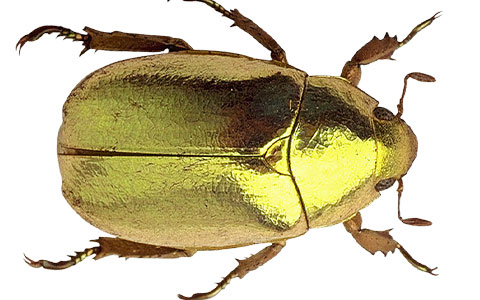
Prevent your trees from dying when metallic wood-boring beetles infest your area. By knowing how to identify these destructive beetles, you can take action to protect and treat your trees.
72tree.com assembled the following information on metallic wood-boring beetles (jewel beetles), the damage they cause to trees, how to protect your trees, and who to call when you identify their presence.
Metallic Wood-Boring Beetles (Buprestidae) – Jewel Beetles
Jewel beetles or metallic wood-boring beetles are members of the Buprestidae family of beetles, consisting of over 15,000 known species. The larvae of this immense beetle family are known as flathead borers. These beetles possess the following traits:
Appearance – Beetles have six legs and short antennae. Nearly all adult jewel beetles will have some metallic coloration on their body. In contrast, the brightest coloration typically appears under the wing covers (elytra) or on the insect’s underside.
Size – These beetles are generally cylindrical or elongated to oval, with lengths from .12 to 3.15 in; most species are under .80in.
Feeding Habits – Adult beetles of the Buprestidae family feed on their host tree’s foliage, causing little damage to the tree.
The larvae of these beetles burrow through the bark, roots, and stems of multiple species of trees and woody plants to reach the cambium (water and nutrient delivery system of the tree).
Some of the more well-known jewel beetles include:
•Emerald Ash Borer (Agrilus planipennis)
•Golden Buprestid (Buprestis aurulenta)
•Bronze Birch Borer (Agrilus anxius)
•Red-legged Buprestis (Buprestis rufipes)
•Flathead Apple Tree Borer (Chrysobothris femorata)
•Anthaxia (Anthaxia)
•Oak Splendor Beetle (Agrilus biguttatus)
•Eurythyrea austriaca (Linnaeus, 1767)
Note: Scientists at the Georgia Institute of Technology in Atlanta uncovered that jewel beetle color results from light-reflecting properties of the cells comprising their external skeletons. This research suggests that a jewel beetle’s color results from its physical structure (cell alignment) rather than pigment’s light-absorbing properties.
For important information about the emerald ash borer, read 72tree.com/emerald-ash-borer-tree-damage/
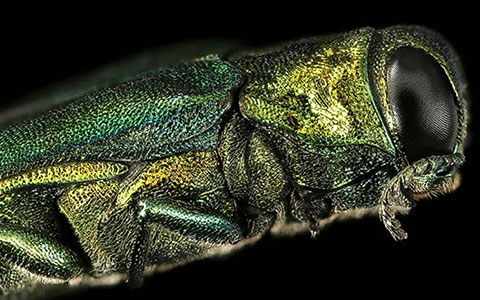
Metallic Wood-boring Beetle Life Cycle
As with most beetle species, their life cycle can be separated into 3 distinct phases, including:
Adult – In spring and summer, adult beetles emerge from their host and feed on its foliage while searching for a mate. Adult jewel beetles are typically short-lived, living only for a few weeks.
Egg – Females lay eggs in crevices in the bark of the same or a nearby tree.
Larva – After hatching, larvae bore into the host until reaching the nutrient-rich cambium of the host tree, where it feeds, grows, and pupates.
Most species have one generation per year or take multiple years to develop. However, some species may produce multiple generations per year.
Metallic Wood-Boring Beetle Infestation Identification
While visual confirmation of adult beetles is best, the following symptoms indicate that a metallic wood-boring beetle infestation is occurring:
•Partially consumed foliage (Leaf notches)
•Chlorosis of foliage in sections of the crown
•Dieback of foliage and stems
•Frass (sawdust) found on the bark from burrowing activities
•D-shaped exit holes in tree bark
•Bulging or vertical splits in the bark (over larval galleries)
•Suckers and water sprouts growing in the crown, on the trunk, and/or from the roots
•Woodpecker damage (woodpeckers hunt beetle larvae)
•Squirrel activity (some squirrel species feed on beetle larvae)
•Adults found in traps
Combined, the beetle’s different stages’ feeding habits will leave a tree with damaged, wilting foliage, and in rapid decline.
As larvae continue to feed, they channel through their host’s cambium layer in a zigzag or ribbon pattern. This feeding ultimately leads to a partial or total girdling of the host, resulting in hydraulic failure and death.
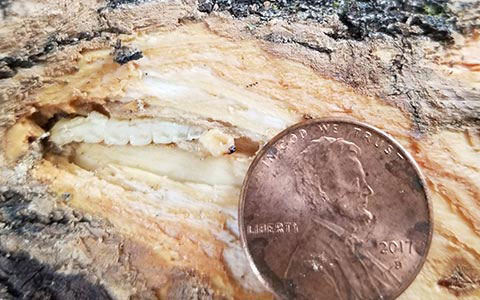
Affected Tree Species – Some tree species especially susceptible to wood-boring beetles in the Buprestidae family include:
•Pine (Pinus)
•Spruce (Picea)
•Fir (Abies)
•Hemlock (Tsuga canadensis)
•Ash (Fraxinus)
•Beech (Fagus)
•Hazelnut (Corylus)
•Apple (Malus domestica)
Generally, Buprestidae prefer attacking trees and woody plants in decline or dying. However, a number of the species will attack “green,” flourishing specimens. An example of this is the emerald ash borer (EAB), which has decimated the ash tree population in many parts of the US and continues on the move.
Note: Many wood-boring beetle species seek, attack, and infest specific tree families like the emerald ash borer that attacks those species within the ash family.
Metallic Wood-Boring Beetle (Buprestidae) Control and Prevention
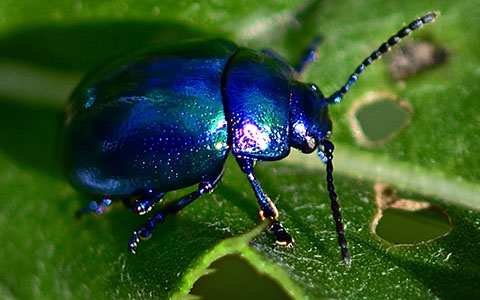
Due to their larvae’s hidden feeding activities, preventing a metallic wood-boring beetle infestation is not always possible. However, the following practices will help reduce the risk of an infestation:
•Select well-adapted species of trees not commonly attacked by wood borers in your area.
•Choose and prepare a suitable planting site to avoid tree stress, freeze damage, sunscald, windburn, and other stressors.
•Use proper watering and fertilization methods.
•Use proper seasonal pruning practices (winter/dormant season).
•Avoid mechanical injury to tree trunks from lawnmowers construction.
Your trees’ care includes the safe removal and destruction of infested, diseased, and dying trees from your property and surrounding areas.
Most of the time, wood-boring insects are secondary invaders (successfully attacking a tree already in decline). For a tree, the first line of defense against any infestation is to keep them healthy. Proper care of trees and woody plants discourages many borer pests. Good sap flow from healthy, vigorous trees, for example, defends the plant from damage by many borer pests.
If you have confirmed a boring insect infestation on or near your property, immediately contact an ISA certified arborist to evaluate your property’s risk and recommend a course of action.
Note: If you are inclined to use chemical treatments on your trees or as a ground soak, allow a professional to apply it. To chemically stop or prevent a boring insect infestation, such products must be applied correctly and at the right time.
Jewel Beetles (Buprestidae)
In this article, you discovered essential information about metallic wood-boring beetles, their appearance and life cycle, how to identify an infestation, and how to prevent or control these deadly beetles.
By taking swift action to prevent or control a jewel beetle infestation, you are helping all of the trees on and around your property.
When you allow a wood-boring beetle infestation to go unchecked, you can be responsible for devastating infestations spreading far beyond your property.
Sources:
texasinsects.tamu.edu/woodborer-metallic-woodboring-beetle/
extension2.missouri.edu/g7422
fs.usda.gov/Internet/FSE_DOCUMENTS/stelprdb5320268.pdf
nsf.gov/news/news_summ.jsp?cntn_id=115304
Notice: Undefined variable: page in /home/vrxdg1855sn3/public_html/wp-content/themes/72tree/content.php on line 15
Notice: Trying to get property 'ID' of non-object in /home/vrxdg1855sn3/public_html/wp-content/themes/72tree/content.php on line 15
Emerald Ash Borer Tree Damage
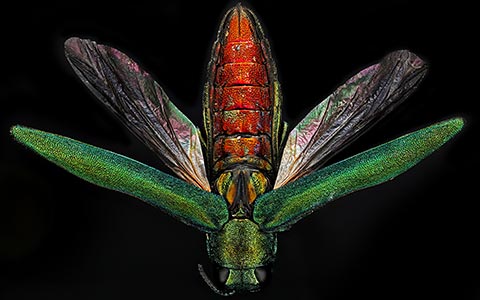
Prevent your ash tree from becoming an ecological hazard and infested by the emerald ash borer. By knowing how to confirm an infestation and who to call, you can protect surrounding trees and help in the effort to contain this tree-killing insect.
72tree.com gathered information on and how to identify an emerald ash borer infestation, how to protect surrounding trees, and when to remove your ash tree.
Emerald Ash Borer Information
The Emerald Ash borer (Agrilus planipennis) is native to eastern Asia. It is a species of beetle that completes its life cycle by going through four distinct stages:
Eggs – This borer’s eggs are laid in clusters on ash tree bark and are very small at 1/25 of an inch, and reddish-brown.
Larvae – Growing to about an inch long, larvae are white, flat, and have a segmented body. This borer’s larvae feed on the cambium and phloem of its host under the bark, leaving S-shaped tunnels or galleries as they feed. Emerald ash borers in the larval stage are responsible for the damage that leads to the eventual hydraulic failure and death of the host tree.
Pupae – In this form, the beetle is transitioning to adulthood and does not feed.
Adult – Adults are about 3/8 to 5/8 of an inch long with metallic, bright green outer wing coverings. The adult emerald ash borer has a coppery red or purplish colored abdomen that is exposed when its wing coverings are lifted. Adults will fly up to a half-mile or more to find new ash trees to nest in. Adult emerald ash borers feed on the tree’s foliage causing little or no damage to the tree.
The emerald ash borer was first discovered in the U.S., infesting dead ash trees in Detroit, Michigan, and Windsor, Ontario in 2002. This beetle is responsible for killing millions of ash trees throughout the areas where it is found.
Unlike native beetles that kill stressed or weakened trees as part of the natural nutrient recycling process, the emerald ash borer kills perfectly healthy trees.
Emerald Ash Borer Infestation Damage
New emerald ash borer infestations can be challenging to detect (they usually begin high up in the crown of the tree). By the time you detect signs and symptoms, the tree is already heavily infested, declining in health, and dying. However, if you can identify heavily infested trees, there may be enough time to protect and save lightly infested trees in the area or at least contain the spread. Consider the following signs of the beetle and symptoms of an infestation:
Signs of an emerald ash borer infestation:
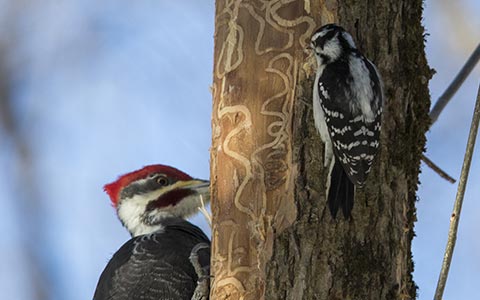
Larval Galleries – S-shaped galleries under the bark.
Exit Holes – D-shaped exit holes up to 1/8 inch wide. The size and shape of the exit holes are significant. Exit holes wider than 1/8 inch, or round holes rather than flattened on one side (D-shaped), are not emerald ash borer.
Leaf Notches – Adults will feed on ash leaves from the outer edge in, leaving notches in the leaves.
Woodpecker Activity – Woodpeckers will leave holes in the bark, surrounded by light-colored patches, as they probe beneath the bark to feed on the larvae.
Squirrel Activity – Some squirrel species will dig into the bark as they try to feed on the larvae. They leave ragged strips of bark on the trunk or stems, exposing the S-shaped galleries formed by the larvae.
Ash tree symptoms of an emerald ash borer infestation:
Epicormic Shoots (suckers or water sprouts) – When an ash tree has been successfully attacked and is under stress, it can produce epicormic shoots on the trunk, roots, and sometimes in the crown on stems and larger branches.
Bark Splits and Deformities – Infested mature trees will commonly present vertical bark splits over the location of larval galleries. On young trees with thin bark, the area over larval galleries will often dry out and turn pinkish brown while presenting vertical bark splits.
Stress Crops – Trees under severe stress can produce massive seed crops. Unfortunately, under these circumstances, few of the seeds will be viable.
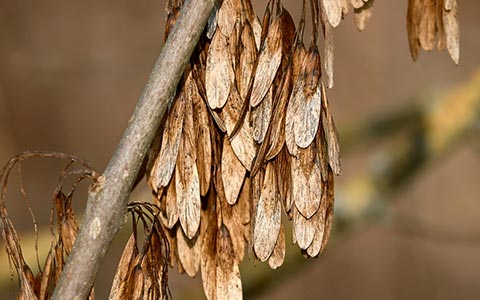
Chlorosis – As the infestation progresses, the foliage will turn yellow, wilt, and fall off the tree.
Branch Death – As the tree begins to suffer hydraulic failure, branches will die, lose their leaves, and become brittle.
Crown Thinning – Perhaps the most telling of the symptoms is the way the crown thins from the top down, leaving dead and bare branches exposed as the condition descends the tree.
You can also determine if you may be at high risk of infestation by visiting emeraldashborer.info/documents/MultiState_EABpos.pdf to see if your region or state is under Federal quarantine for the movement of emerald ash borer regulated articles.
If you detect any or a combination of the above signs and symptoms, contact a certified arborist in your area to inspect and confirm your findings. The following link explains ISA certified arborists and how to locate one in your area – 72tree.com/what-is-an-isa-certified-arborist/
Confirmed Emerald Ash Borer Infestation
Native North American ash trees possess almost no natural resistance to the emerald ash borer. Death of infested trees is at or near 100% unless managed very early on for emerald ash borer control. Once you have confirmed an infestation, immediate action should be taken to protect trees in surrounding areas.
• Call the USDA Emerald Ash Borer Hotline at (866) 322-4512 for specialized instruction and guidance (specific to your location)
• Hire an arborist to inspect and treat neighboring trees
• If your tree is beyond saving, remove it immediately
• Prevent spreading an emerald ash borer infestation by having your felled tree chipped (this process is highly effective in eliminating the borer)
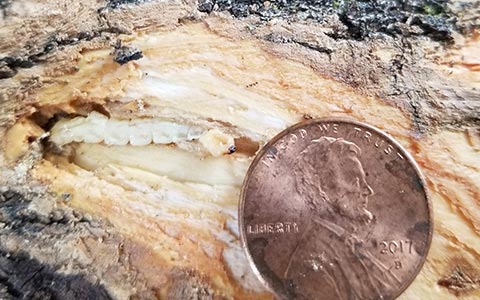
Because this killer beetle does not discriminate between sick or healthy ash trees, there is little you can do besides chemical deterrence to prevent an infestation. Preventative measures for this pest should be applied by an ISA certified arborist.
Emerald Ash Borer (Agrilus planipennis)
In this article, you discovered information about the emerald ash borer, signs and symptoms that identify it, and what to do if you confirm an infestation in your ash tree.
By taking immediate action to deal with a potential or confirmed emerald ash borer infestation, you are protecting the ash tree population in your area. Besides saving yourself from likely financial losses when you are forced to take action.
Ignoring the dangers of an emerald ash borer infestation can lead to the destruction of an entire region’s ash tree population, ecosystem, and cause catastrophic damages as dead trees begin to fall.
Sources:
ctpa.org/the-life-stages-of-eab/
ajc.com/lifestyles/environment/invasive-beetle-threatens-georgia-ash-trees-with-devastation/kTjy7UC4LocGRhSkHP7REK/
citybugs.tamu.edu/2015/10/23/recognizing-emerald-ash-borer-damage/
invasive.org/gist/moredocs/agrpla02.pdf
fs.fed.us/aboutus/budget/requests/DDBR428_Emerald_Ash_Borer_report_to_Congress.pdf
cfs.nrcan.gc.ca/pubwarehouse/pdfs/26856.pdf
orkin.com/other/beetles/emerald-ash-borer
Notice: Undefined variable: page in /home/vrxdg1855sn3/public_html/wp-content/themes/72tree/content.php on line 15
Notice: Trying to get property 'ID' of non-object in /home/vrxdg1855sn3/public_html/wp-content/themes/72tree/content.php on line 15
9 Common Tree Health Problems and Solutions
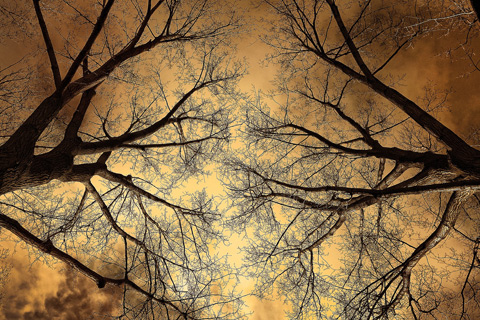
Trees get sick. Like any other living organism, a tree can fall ill for various reasons. If left to its own devices, it can eventually fall causing catastrophic damages.
When an otherwise healthy tree shows signs of illness or infestation, you must take action by eliminating the cause or calling on a certified arborist to evaluate the tree and offer a course of action.
The team of arborists at 72tree.com prepared a comprehensive list of 9 common tree health problems and their solutions.
Weather and Tree Health
Trees are affected by inconsistent weather patterns. The following demonstrates how weather impacts trees and how you can help them remain healthy.
1 – Drought:
One of the most common ailments of trees, symptoms of drought can be tricky. Sometimes, the signs won’t appear until as much as a year after the damage has been done. Those symptoms include:
•Drooping, wilting, and yellowing of leaves.
•Premature needle or leaf drop.
•Pronounced dieback.
•Thinning of the canopy.
•Deep cracks in the bark.
•Necrosis of leaves or browning of needles.
•Death of the tree.
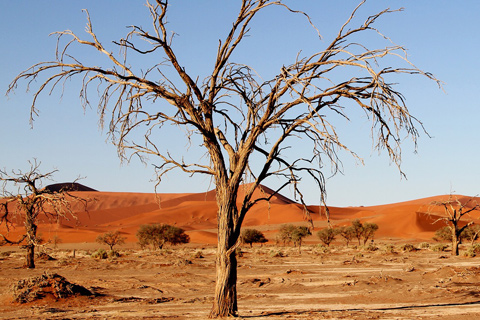
Solution 1 – For planting new trees, make sure they are appropriate for the USDA Hardiness Zone in which you are located. If your area experiences occasional or frequent droughts, seek drought-resistant species.
Solution 2 – Water your trees regularly. New trees will require a deep watering once a week for the first two years (to establish its roots). In addition to watering, add a 3-inch layer of organic mulch around the tree to help the soil retain its moisture.
After two years and through its adult life, trees are very capable of finding water sources. However, throughout dry summer months and near the end of fall, weekly deep watering and mulching will help prevent drought problems.
Solution 3 – Prune back all cracked, dead or weakened tissue. Without pruning these troubled areas, the tree will become vulnerable to infection and infestation. Call on an arborist when pruning removes more than 25% of the tree’s canopy or mass. They can assess the tree and offer a course of action.
2 – Winter Burn:
Also known as desiccation, winter burn occurs primarily in evergreens and causes a discoloration of the foliage. Effects of winter burn are more pronounced where the tree is exposed to the sun and wind. This affliction requires the presence of the following three factors:
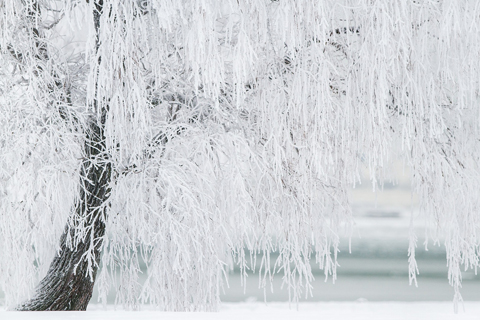
•Freezing temperatures
•Dry soil
•Wind
Solution – Provide your trees with weekly deep waterings through the end of fall and beginning of winter (before the ground freezes) and mulch the area of the root zone for the soil to retain moisture.
For trees that are highly exposed to the wind and sun, wrapping them with burlap will provide an effective barrier which can be removed as temperatures rise.
3 – Improper Pruning, Trimming, and Cutting:
There is a right way, and a right time to perform tree pruning, cutting, or trimming. When performed improperly, the tree may be left exposed to infection and infestation. When done at the wrong time, new growth may not have enough time to adapt before winter, further stressing the tree.
Solution – Know when to prune. Depending on the species of your tree, it may be better to prune in early spring, late fall, or even in the summer months. Use proper pruning or cutting methods when removing limbs, branches, or stems.
Watch this video to learn more about proper pruning techniques.
Tree Insect Infestation
For the most part, healthy trees can stave off insect infestations. However, when a tree’s health is weakened, or there is an increase in the insect population, no tree is off limits.
4 – Insects on Leaves and Bark:
Insects such as aphids, inchworms, bagworms, spider mites, lace bugs, and tree scale are common and relatively easy to manage.
Solution – Apply insecticidal soap, neem oil, or a horticultural oil directly on the area of the infestation.
5 – Boring Insects:
Insects such as the Emerald Ash Borer, Japanese Beetle, Southern Pine Beetle, and Ambrosia Beetle are more complicated to control. You can identify boring insect activity by seeing “sawdust” from their boring activity and the entry hole they create when entering the tree.
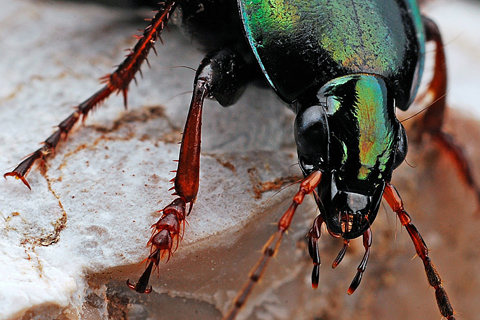
Note: Do not inject insecticides, poisons, or other substances into boring insect entry holes. The chemical may end up further damaging the tree leaving it more susceptible to infestation and death.
Solution 1 – Prune back branches and stems that have been infested and destroy them to prevent further spreading. If more than 25% of the tree’s foliage or mass must be removed, seek the assistance of a certified arborist.
Solution 2 – When the infestation is in the trunk of the tree, call an arborist to evaluate the damage and determine a safe approach to halting the infestation.
Solution 3 – Prevent infestations by keeping your trees healthy. When you hear about an outbreak in your area, treat your trees with a bark insecticidal spray to deter the insects from making your tree its host.
Tree Fungal Diseases
Most fungal diseases make their way into a tree through the roots and open wounds. Once a tree is widely infected, it becomes challenging to control the fungi and will often result in the removal of the tree.
6 – Fungal Infection (internal)
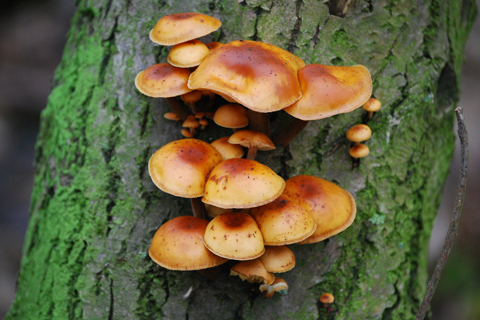
The most alarming sign of fungal trouble is when mushrooms grow on the trunk or branches. Since they require decaying matter to develop, there is a serious issue at play.
Note: The introduction of herbicides to a wounded tree or beneath the bark will only serve to accelerate the death of the tree.
Solution 1 – Prune back and destroy affected foliage, limbs, and branches. Again, when more than 25% of the tree’s foliage or mass must be removed, seek the assistance of a certified arborist. The removal of the tree may be the only way to keep your other trees from being infected.
Solution 2 – Properly prune your healthy trees (or have them pruned) to keep them healthy. A poorly pruned tree is more susceptible to both insect infestation and fungal disease.
7 – Fungal Infection (external)
The wind, birds or insects often carry spores of fungi and pathogens from tree to tree. Cankers, fire blight, rust disease, powdery mildew, and many others are common in the spring and summertime.
Solution – Carefully prune back and destroy affected foliage and apply a fungicidal spray to the affected and surrounding areas. Surrounding trees and shrubs should all undergo treatment as well.
Watch this video to learn about pathogens such as fire blight and cankers which affect tree bark and foliage.
Tree Problems Caused by People and Machinery
All of the threats mentioned above aside, people pose the most significant threat to a tree’s livelihood either by lack of knowledge or accident.
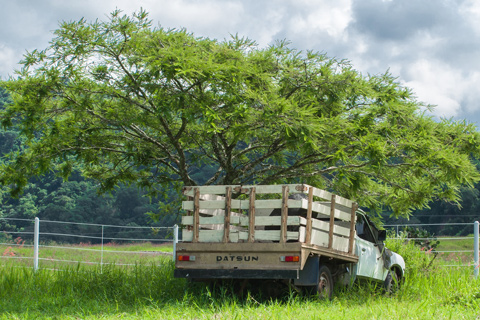
8 – Soil Compaction:
The land that surrounds a tree (especially under its canopy) contains the majority of the roots that draw water for the tree. These roots grow within the top 12 to 18 inches of soil. When this area is compacted, these roots suffocate and die, severely weakening the tree.
Trees compromised by soil compaction are at a heightened risk of toppling in a storm or severe weather event, as their roots are no longer effectively able to anchor them to the ground. Many times, no storm is required, the tree will eventually succumb to its own weight and fall on its own.
Solution – Never drive or park any vehicles underneath a tree’s canopy. Likewise, never store heavy equipment, or erect tool sheds under a tree.
In most municipalities nationwide, tree protection ordinances mandate that protective barriers be placed around trees on construction sites to deter such activities.
The majority of those same ordinances impose heavy fines and replanting requirements known as a recompense for damaged or removed trees.
9 – Lawn Mowers, Motorized Equipment, and Bark Damage:
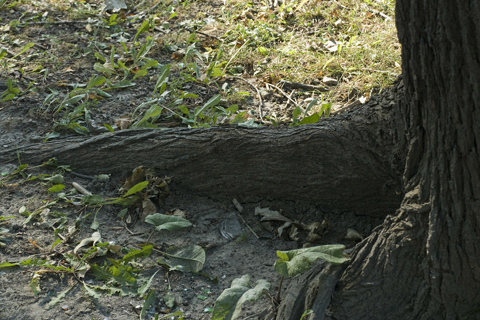
Below the bark of a tree and outer layer of roots, there is a thin layer of cells called the “phloem” which is the conduit for nutrients traveling up and down the tree.
When a tree’s bark is damaged, not only is the tree susceptible to infection and infestation, that flow of nutrients is interrupted and if the damage is around the majority or entirety of the trunk, the tree will be girdled and die.
Solution 1 – Do not allow lawn mowers and other equipment to damage protruding roots or the bark of the tree.
Solution 2 – For protruding roots, either raise the ground level to bury them, or carefully prune them. If you choose to prune the roots, call on a tree professional for detailed instruction or to do the job. Just cutting them out may result in the decline of the tree’s health and its death.
Solution 3 – If the bark of a tree is dried, cracked, or knocked loose, DO NOT remove it. Call an arborist to evaluate the tree’s situation.
Healthy Trees and Arborists
All arborists would agree that healthy, well cared for trees are capable of resisting most infestations and illnesses on their own. However, when a tree does present signs of trouble, knowing what to do can mean the difference between life and death for the tree.
Whether the troubles come from weather, insect, fungi, or people, the solutions are usually simple when detected and treated early. In many cases, to prevent the spreading of a pathogen or the demise of the tree, a certified arborist should be called in to assess the situation and determine a safe course of action.
When your trees show signs of trouble, doing nothing or hesitating to correct the problem may result in the decline of the tree’s health or even its abrupt death.
Sources:
https://www.treesaregood.org/treeowner/planthealthcare
http://www.missouribotanicalgarden.org/gardens-gardening/your-garden/help-for-the-home-gardener/advice-tips-resources/pests-and-problems/environmental/winter-injury/desiccation-or-winter-burn.aspx
https://www.arborday.org/trees/health/issues.cfm
